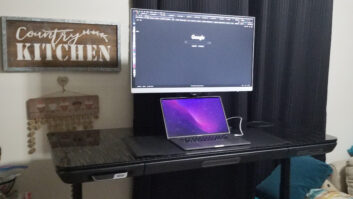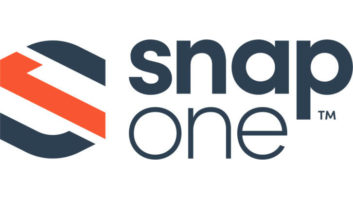Remember when camcorders looked like mini rocket launchers that rested on your shoulder? Remember when the Internet was just getting popular, and we used something called a 9,600 baud modem to go online?
Remember when President Clinton just entered the White House?
That was part of the picture back in 1993.
In 1993, the Internet was a very new concept. AOL president Steve Case said only 3 percent of households belonged to an online service that year. Another fact — only a quarter of the U.S. households owned a PC.
The industry was beginning to change in many respects, especially at the retail level. The discount chains and warehouses began taking over, and retailers started wondering where their margins were heading.
Best Buy’s Dick Schulze complained in a dealer roundtable, “I think people fail to realize how dramatic the shift in consumer buying patterns has been, and how much the strength of the discount and wholesale club channels has grown in this industry.”
He said discount and warehouse clubs were up by 38 percent. The country was only just getting out of a recession. “I don’t know any of us that are turning in that kind of increased sales performance,” he said.
In an ominous message, Schulze told of Best Buy’s plans to respond. “We’ve opted to match the discount stores and wholesale clubs dollar for dollar. We think that the future for margins in our business, given the fact that the manufactures feel compelled to continue to move toward those discount channels, will continually be fraught with pressure.”
And this was before e-commerce.
The home audio market was beginning to change and a story proclaimed, “The audio industry has begun to organize itself around home theater.” Fisher made headlines by offering a 24-disc changer, marking the era of “jukebox” CD systems.
Something strange was happening in the TV market— some suppliers raised prices. Suppliers were required by law to produce closed-caption enabled TVs for the hearing impaired by July 1. This added to the cost. Later in the year, the yen rose in value, prompting even car stereo suppliers to hike prices by up to 10 percent.
Accessories were starting to become big business. Thomson entered the market with 200 SKUs. Digital Radio was just a gleam in the NAB’s eye. The industry was beginning to test the various Digital Audio Radio services and a standard was due in 1994. Four-head VCRs were big sellers at $199 and we still bought thermal paper fax machines.
Back to computers: AOL president Steve Case was quoted in TWICE as saying that the Internet was just beginning to catch on. “When I tried to explain to people what online services were, there was this blank look on their face,” he said. “In the past year or two, that’s really shifted.” Boy did it ever.
Computers hit a milestone in 1993 because most were now equipped with modems. There was a long list of fledgling online services back then, such as CompuServe and Delphi, and most had only a million or two users.
Laptop computers were just starting to catch on, leading then president of CompUSA Nathan Morton to tell TWICE that the laptop share of total computer sales would increase from 10 percent to 30 percent in 1993.
Before 1993, Windows was on 18 percent of computers and Macintosh software on 10.4 percent. But in that year, Microsoft was surging ahead with more than a 50 percent share.
All of a sudden mass merchants were erecting long aisles of shelf space for “CD-ROM” software titles in colorful boxes. An encyclopedia CD-ROM cost a whopping $500 at the beginning of 1993 and was down to about $75 by the end of the year. Soon, retailers would be giving away the software for free.
What I’m trying to say here is that computers were still pretty geeky in 1993. At least a lot of the reporters were geeky. Here’s an example: I went to a MacWorld convention around then, and as often happens, the airline lost my luggage. That left me with nothing to wear but a mismatched skirt and T shirt. I had no choice but to walk into the convention the first day looking like a color-blind tourist. But, to my surprise and relief, I fit right in! Everyone else was equally mismatched, disheveled and oblivious to the concept of business casual. That was when Mac people, including Mac reporters, were truly a different breed.
By the second half of 1993, the consumer electronics industry was consumed by a wave called multimedia. It overtook PCs in the form of a run on new sound cards and graphics boards and add-on speakers. It overtook the laser disc market in a battle between 3DO Multiplayers, Pioneer’s LaserActive and 64-bit video game platforms such as the Atari Jaguar. Trip Hawkins, president and CEO of the then-highflying 3DO company, was promising to change the CE landscape with its new multimedia licensing designs that were rapidly adopted by such companies as Panasonic and AT&T.
1993 was an important year editorially for TWICE. Editor in chief Steve Smith joined the publication that year, as did our executive editor, Greg Tarr. TWICE also became the official publisher of the Consumer Electronics Show Daily, with the contract starting in January 1994.













